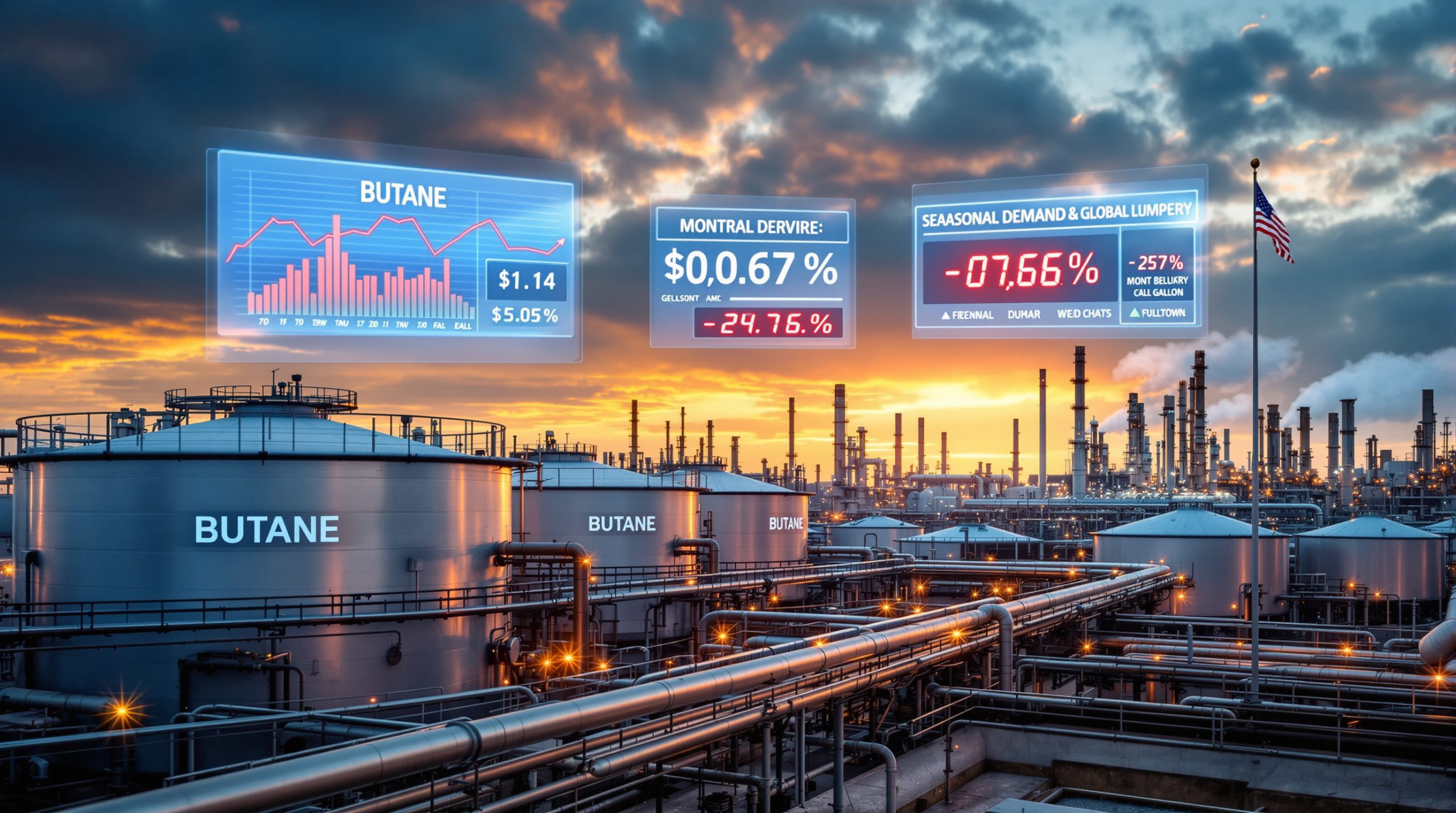Navigating the Uranium Renaissance: Market Dynamics and Investment Opportunities
As the nuclear energy sector undergoes a remarkable revival, uranium markets are experiencing a fundamental shift. This transformation is creating compelling investment opportunities across various segments of the uranium value chain, from exploration companies to established producers and near-term developers.
What's Driving the Current Uranium Market Revival?
The Structural Supply-Demand Imbalance
Global uranium production currently trails annual demand by approximately 20%, creating persistent market tightness. This shortfall stems from over a decade of underinvestment following the 2011 Fukushima disaster, when uranium prices collapsed and capital for new mining projects dried up.
Spot uranium prices have surged to $72.30/lb as of mid-2025, reflecting this growing supply deficit. Meanwhile, long-term contract prices have increased even more dramatically, jumping 23% year-over-year according to industry consultant UxC, signaling utilities' growing concerns about future availability.
Kazatomprom, the world's largest uranium producer, has revised its 2025 production targets downward by nearly 20% due to ongoing operational constraints, further tightening an already constricted market.
"We built ATHA to not only be relevant, but to participate materially in this uranium cycle that we're at the very early innings of. I don't think the macro's ever been better than it is right now." — Troy Boisjoli, CEO of ATHA Energy
Energy Security and Geopolitical Realignment
The US ban on Russian uranium has accelerated Western supply chain reshoring efforts, creating a significant shift in global uranium trade flows. For decades, Western utilities relied heavily on Russian conversion and enrichment services, but geopolitical tensions have forced a strategic reevaluation.
Countries are increasingly developing strategic uranium reserves to buffer against supply disruptions. Japan, for instance, maintains a significant stockpile to ensure energy security, while the U.S. Uranium Reserve program has begun purchasing domestically produced uranium.
"The government is really starting to focus on all these critical elements… having stockpiles and supplies that are isolated from China or Russia." — Mark Chalmers, President & CEO of Energy Fuels
Western utilities are actively seeking secure, politically stable uranium sources, creating premium opportunities for companies operating in jurisdictions like Canada, Australia, and the United States.
Nuclear Power Renaissance and Climate Policy
Over 80 Small Modular Reactors (SMRs) are projected for deployment across 15 countries by 2035, representing a potential paradigm shift in how nuclear power is deployed. Their modular nature allows for shorter build times, reduced financing risk, and applications in remote locations.
International finance institutions including the World Bank and EBRD have reversed longstanding bans on nuclear lending, reflecting the growing recognition of nuclear energy's role in decarbonization. This policy shift is unlocking billions in potential capital for new nuclear projects.
Data centers and AI infrastructure may require up to 28 GW of nuclear-powered load by 2040, creating an entirely new demand segment for uranium. The tech sector's need for reliable, carbon-free baseload power aligns perfectly with nuclear energy's capabilities.
How Are Uranium Prices Responding to Market Forces?
Price Dynamics and Contracting Trends
Spot uranium prices have stabilized around $70-75/lb in 2025, representing a multi-year high. However, the long-term contract market tells a different story, with term prices diverging significantly from spot as utilities rush to secure future supply.
Utilities are increasingly shifting toward long-term contracting for the 2026-2030 window, recognizing the limited pipeline of new production. This contracting activity provides critical revenue visibility for producers and developers.
Price incentives above $85/lb may be required to stimulate significant new mine development, particularly for projects requiring extensive infrastructure investment or facing challenging jurisdictional hurdles.
Physical uranium funds and ETFs continue to absorb available supply, reducing market liquidity and potentially accelerating price movements in both directions.
Supply Constraints and Production Challenges
Major producers face ongoing technical, operational, and regulatory hurdles to expanding output. Even the largest producers can't simply turn on additional production capacity – uranium mining requires careful planning, permitting, and development.
The Paladin uranium halt in Namibia demonstrates how operational challenges can affect global supply. Development timelines for new uranium projects typically range from 7-10 years from discovery to production, creating a significant lag between price signals and supply response. This structural lag is a key factor in uranium's pronounced boom-bust cycles.
Permitting processes have become increasingly complex, particularly in Western jurisdictions where environmental and social impact assessments are rigorous and time-consuming.
Skilled labor shortages and supply chain issues are delaying project development timelines across the sector, with specialized mining engineers and radiological technicians in particularly short supply.
Investment Capital Flows and Market Sentiment
Institutional investors are increasingly viewing uranium as a strategic asset class rather than a cyclical commodity play. This shift in perception is bringing longer-term capital into the sector.
Sovereign wealth funds are allocating capital to uranium as part of critical mineral strategies, recognizing its strategic importance for energy security and decarbonization.
ETFs and physical uranium trusts continue to attract significant investment inflows, providing retail investors with exposure to physical uranium prices without direct commodity ownership.
Retail investor interest has grown substantially, particularly in junior exploration companies that offer leverage to rising uranium prices through discovery potential.
What Types of Uranium Companies Offer the Best Investment Potential?
Near-Term Producers with Permitted Assets
Companies with fully permitted projects ready for development have significant timing advantages in capturing current high uranium prices. These "shovel-ready" assets can often begin production within 12-24 months of a construction decision.
Restart projects with existing infrastructure can reach production faster and with lower capital requirements than greenfield developments. IsoEnergy's Tony M Mine, for example, requires only "a handful of millions of dollars" to return to production.
"We're probably in a good position now to trade dollars… no point in giving this away when we know that 12–18 months from now… we can start putting money into the pockets of our investors." — Marty Tunney, COO of IsoEnergy
Assets in stable jurisdictions command premium valuations due to lower political risk and more predictable permitting timelines. This jurisdictional premium has grown as geopolitical tensions have increased.
Companies with offtake agreements or strategic partnerships have reduced market risk and often secured favorable financing terms based on these relationships.
Exploration Companies with Scale Potential
Basin-scale exploration portfolios provide multiple discovery opportunities, reducing the binary risk typical of single-project explorers. ATHA Energy, for example, controls over 3.4 million acres across the Athabasca, Thelon, and Angikuni basins.
"We have the area around Lac 50, which has a scale that we believe is significant… we're talking about a regional-scale opportunity." — Troy Boisjoli, CEO of ATHA Energy
High-grade discoveries can be economically viable even in challenging price environments. The Athabasca Basin in Canada is known for extraordinarily high-grade deposits that can exceed 20% U₃O₈, compared to global averages below 0.2%.
Companies with experienced technical teams have higher discovery probabilities. Past success in uranium exploration is a strong predictor of future discoveries, making management track record a critical evaluation factor.
Strategic land positions in proven uranium districts command premium valuations due to reduced exploration risk and established infrastructure.
Established Producers with Growth Pipelines
Companies with existing cash flow can self-fund expansion and exploration, reducing dilution risk for shareholders. This financial flexibility is particularly valuable in volatile commodity markets.
Producers with diverse asset portfolios can optimize production based on market conditions, focusing on their lowest-cost operations during price downturns and expanding output when prices rise.
Established relationships with utilities facilitate new long-term contracts, providing revenue stability and potential price premiums for reliable suppliers.
Operational expertise translates to lower execution risk for new projects, as these companies have overcome the steep learning curve associated with uranium production.
What Are the Key Competitive Advantages in the Uranium Sector?
Jurisdictional Advantages and Permitting Status
Fully permitted projects eliminate significant development risk and timeline uncertainty. Global Atomic's Dasa Project in Niger represents the only fully permitted greenfield uranium mine currently under construction globally.
"We have a tremendous project [Dasa]. It's the only greenfield project in the world. It's very important for our customers who are sending letters of support to our bankers." — Stephen Roman, President & CEO of Global Atomic
Assets in nuclear-friendly jurisdictions face fewer regulatory hurdles. Countries with established nuclear power programs typically have well-defined regulatory frameworks for uranium mining, reducing permitting uncertainty.
Domestic production in major nuclear power markets may receive policy support through initiatives like the U.S. Uranium Reserve, which aims to rebuild domestic uranium capabilities.
Historical production areas often have streamlined permitting pathways due to existing environmental baseline data and community familiarity with uranium mining.
Technical Expertise and Operational Excellence
Companies with experienced technical teams achieve better exploration and development outcomes. The specialized nature of uranium exploration requires specific expertise in radiometric surveying, geophysical interpretation, and deposit modeling.
Operational expertise in specific extraction methods (ISR, conventional mining) drives efficiency. In-situ recovery (ISR) mining, for example, requires specialized hydrogeological understanding that doesn't readily transfer from other mining sectors.
US uranium production challenges have highlighted the importance of technical innovation in overcoming operational hurdles. Processing capabilities and recovery rates significantly impact project economics. Energy Fuels' White Mesa Mill, the only conventional uranium mill operating in the US, provides a strategic advantage for processing uranium from multiple sources.
Innovation in mining methods can unlock previously uneconomic resources. Advanced sorting technologies, for instance, can significantly reduce processing costs by separating waste rock before energy-intensive milling.
Environmental management capabilities reduce regulatory risks and timeline extensions. Companies with strong environmental performance typically face fewer delays and compliance issues.
Strategic Positioning and Market Access
Relationships with utilities and fuel buyers facilitate offtake agreements, which can be critical for project financing. Utilities often prefer to contract with suppliers they know and trust.
Marketing expertise impacts realized prices and contract terms. Understanding the complex uranium market, with its unique contracting practices and price mechanisms, can significantly enhance revenue.
Diversification across multiple projects reduces single-asset risk, providing operational and development flexibility as market conditions change.
Vertical integration into conversion or fuel fabrication captures additional value. While rare, companies with capabilities across multiple fuel cycle stages can achieve higher margins and more stable cash flows.
How Are Small Modular Reactors Transforming Uranium Demand?
The SMR Revolution and Market Implications
SMRs require approximately 15-25 tons of uranium annually per 100 MW of capacity. While individual units use less fuel than conventional gigawatt-scale reactors, their potential for widespread deployment could significantly increase overall uranium demand.
Modular designs allow for incremental capacity additions and shorter construction timelines, reducing the financial risks that have plagued large nuclear projects. This modular approach could accelerate nuclear deployment globally.
Lower capital costs and reduced financing risks make SMRs attractive to utilities and governments that have been hesitant to commit to large nuclear projects. The ability to add capacity in smaller increments aligns better with uncertain demand growth.
Remote applications (mining operations, military bases, data centers) expand potential deployment beyond traditional utility settings. These applications often currently rely on diesel generation, creating substantial decarbonization opportunities.
Standardized designs streamline regulatory approvals and operational requirements, potentially accelerating the deployment timeline for nuclear power globally.
Key SMR Development Programs and Timelines
NuScale's VOYGR SMR has received design certification from the U.S. Nuclear Regulatory Commission, a critical regulatory milestone that paves the way for commercial deployment. The company's first project is advancing in Idaho with utility partner UAMPS.
Rolls-Royce SMR is advancing through UK regulatory approval with first deployments targeted for early 2030s. The company leverages decades of experience building compact reactors for nuclear submarines.
GE Hitachi's BWRX-300 has been selected for deployment in Canada, Poland, and the United States, demonstrating international interest in the technology. The design builds on GE's extensive boiling water reactor experience.
TerraPower's Natrium reactor, backed by Bill Gates, is under development in Wyoming at the site of a retiring coal plant. The project highlights the potential for nuclear to replace retiring fossil fuel generation.
X-energy's Xe-100 high-temperature gas reactor is progressing toward commercial deployment, with potential applications in both electricity generation and industrial heat.
Fuel Requirements and Supply Chain Implications
Advanced reactor designs may require higher enrichment levels (HALEU) than traditional reactors. High-Assay Low-Enriched Uranium (HALEU) with enrichment between 5-20% U-235 enables more efficient reactor designs but requires specialized fuel cycle infrastructure.
New fuel fabrication capabilities will be needed to support SMR deployment, creating additional investment requirements beyond the reactors themselves. This specialized infrastructure represents both a challenge and an opportunity.
Fuel supply security is a critical consideration for SMR operators, driving interest in domestic or allied nation uranium sources. This security premium benefits producers in politically stable jurisdictions.
Licensing of new fuel designs creates additional regulatory hurdles that must be overcome before widespread SMR deployment. The regulatory framework for these advanced fuels is still evolving in many countries.
What Are the Top Uranium Investment Opportunities in 2025?
Companies with Near-Term Production Potential
Energy Fuels leverages its White Mesa Mill, the only conventional uranium mill operating in the US, providing a strategic advantage for processing uranium from multiple sources. The company can rapidly scale production as prices warrant.
IsoEnergy's Tony M Mine offers permitted, past-producing assets ready for restart with minimal capital requirements. The company's strategic acquisition of assets in the United States positions it well to supply the domestic market.
Global Atomic's Dasa Project in Niger represents the only fully permitted greenfield uranium mine currently under construction globally. With 7,000 tons of development ore already on surface and shipping expected to begin in 2026, the company is positioned to benefit from the current uranium price environment.
Near-term producers can capitalize on current high prices without extensive development timelines, providing potentially rapid returns on investment as production comes online.
Companies with existing infrastructure can achieve production with minimal capital expenditure, reducing financing risk and potential shareholder dilution.
Exploration Companies with Discovery Potential
ATHA Energy controls over 3.4 million acres of exploration ground across the Athabasca, Thelon, and Angikuni basins. The company's 2025 drill program includes 10,000 meters focused on Angilak, targeting high-grade uranium mineralization.
Companies targeting high-grade discoveries can generate significant shareholder returns even if uranium prices moderate. The extraordinary grade potential in districts like the Athabasca Basin provides substantial margin protection.
Basin-scale exploration programs increase discovery probabilities and resource potential by allowing systematic evaluation of multiple targets within favorable geological settings.
Technical innovations in exploration methods improve discovery rates and reduce costs. Advanced geophysical techniques and machine learning applications are enhancing target selection and drilling efficiency.
The Patterson uranium project exemplifies how strategic land positions in proven uranium districts command premium valuations due to reduced exploration risk and proximity to existing infrastructure.
Diversified Uranium Players with Multiple Revenue Streams
Energy Fuels offers exposure to both uranium and rare earth elements production, providing diversification within the critical minerals space. This dual focus creates potential revenue stability across different commodity cycles.
Companies with vanadium, copper, or other by-product credits have improved economics compared to pure-play uranium producers. These additional revenue streams can substantially lower effective production costs.
Diversified revenue streams provide financial stability through market cycles, allowing companies to weather potential uranium market volatility.
Multiple commodity exposure hedges against uranium-specific market risks, such as policy changes or inventory overhangs.
Integrated operations capture value across multiple parts of the supply chain, from mining through processing and potentially into higher-value products.
What Risks Should Uranium Investors Consider?
Market and Price Volatility Factors
Historical uranium price volatility has been extreme, with previous boom-bust cycles seeing prices rise tenfold before collapsing. The 2007 peak above $130/lb was followed by a decade of prices below $30/lb.
Spot price can be influenced by relatively small trading volumes due to the uranium market's limited liquidity. Physical uranium doesn't trade on major commodity exchanges, making price discovery less transparent.
Long-term contract prices may diverge significantly from spot prices, creating potential valuation disconnects for companies with different sales strategies.
Government inventory sales or policy changes can impact market balance unexpectedly. Japan's post-Fukushima inventory sales, for example, depressed prices for years.
Secondary supplies (HEU blending, underfeeding) can temporarily suppress prices despite primary production deficits. Understanding these complex secondary sources is critical for market analysis.
Regulatory and Political Considerations
Nuclear policy shifts following political changes can impact demand outlook. Germany's decision to phase out nuclear power after Fukushima demonstrates how quickly policy can change.
Permitting timelines for new mines often extend beyond initial projections, particularly in jurisdictions with evolving regulatory frameworks or significant public opposition.
Environmental regulations continue to evolve, potentially increasing compliance costs for uranium producers. Water management, in particular, faces increasing scrutiny and regulatory requirements.
Public perception issues can delay project development or impact financing availability. The uranium sector continues to face social license challenges in many regions
Ready to Invest in the Next Major Mineral Discovery?
Discovery Alert's proprietary Discovery IQ model instantly notifies investors of significant ASX mineral discoveries, transforming complex data into actionable insights that could lead to substantial returns. Explore historic examples of exceptional market outcomes by visiting Discovery Alert's dedicated discoveries page and begin your 30-day free trial today.




